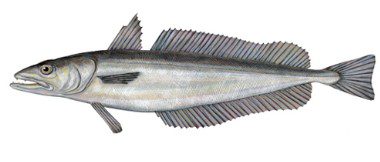

Hake is a safe and healthy fish for dogs to eat, providing a range of amino acids, proteins, riboflavin, and thiamine that help to build and repair their muscles and bones. It’s a low mercury fish and can be found in some commercial dog food and treats.
Hake is rich in the following nutrients: omega-3 fatty acids, which support a dog’s heart health; vitamins A, B6, B12, E, and D, as well as iodine, calcium, magnesium, phosphorus, potassium, riboflavin, thiamine, and zinc, which are essential for proper organ functioning.
Hake bones may present a choking hazard, as well as cause gastrointestinal tract injuries if ingested. Additionally, raw hake could contain bacteria and parasites.
Before feeding your dog hake, make sure to clean and debone the fish and cook it thoroughly.
Hake is a sustainable and nutritious fish specie that has gained popularity among pet-owners. Also known as Croaker, Merlucciidae, Whiting, Ling, or Squil, this fish is abundant in the Atlantic Ocean. Hake offers an impressive range of nutrients including proteins, omega-3 fatty acids, and vitamins like A, B6, B12, E, and D - all ideal for helping to build and repair the muscles and bones of your dog. It is quite affordable and easy to find. Before feeding hake to your pet, be sure to debone it and cook it well to prevent choking, gastrointestinal injuries, and bacterial and parasitic infections. Alternatively, you can use fish-based supplements that are certified as organic or humane, and other sustainable fish species such as salmon or tilapia, that are also rich in nutrients.
Do you have any experience with feeding your pet hake? Is your dog’s diet well-balanced? Is your pet getting enough of the essential nutrients that hake provides?
We want to encourage you to share your experiences with us and other pet-lovers in our community. Your valuable knowledge and advice can help many other pet owners to make the best nutritional decisions for their furry friends. Wishing you and your pup a happy and healthy life!